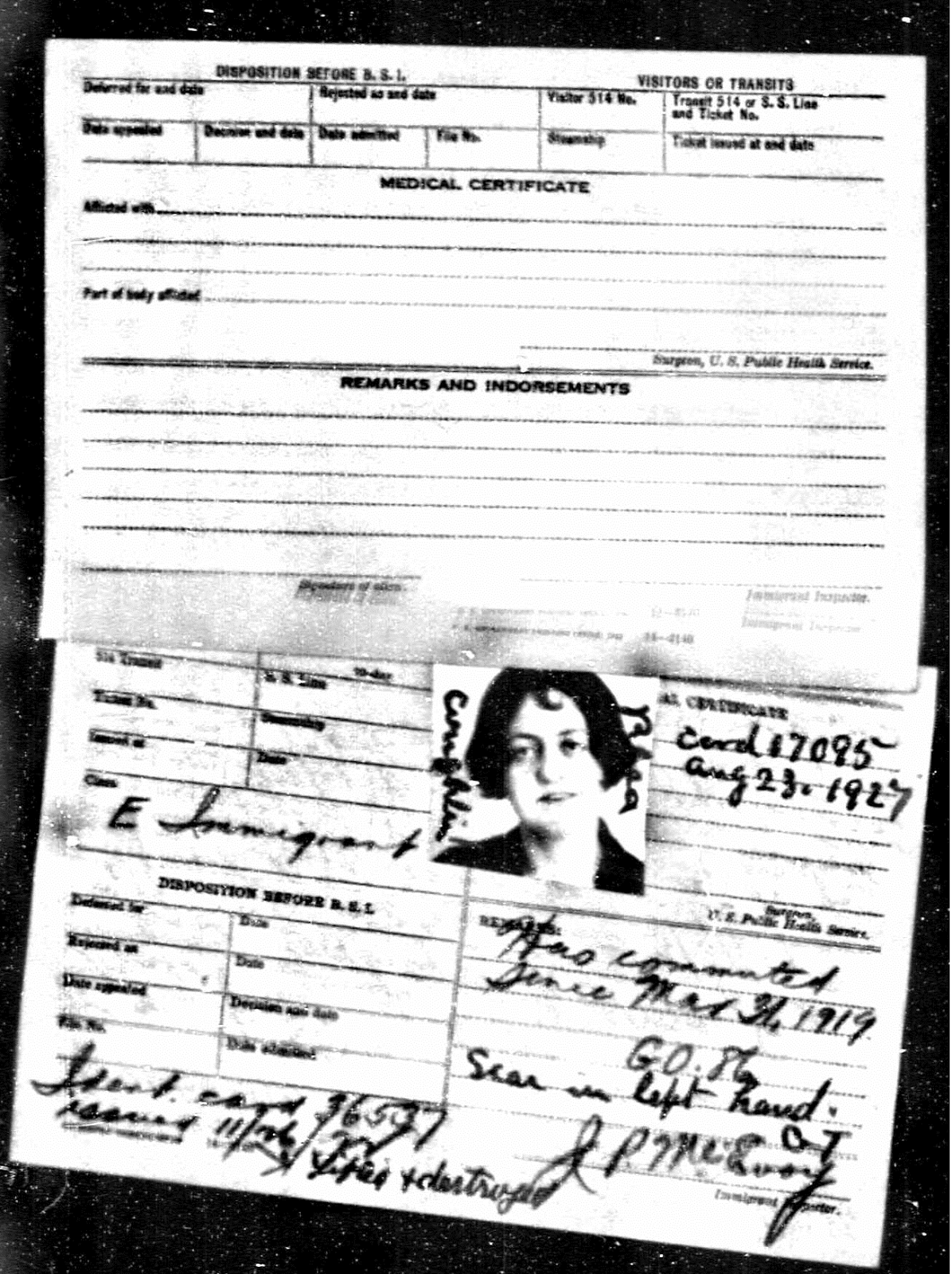The primary focus of "My Moynahan Genealogy" blog has been my patrilineal ancestors. This is because the genealogical research of my matrilineal ancestors has been undertaken extensively by my cousin in Nova Scotia. My cousin has shared a great deal of the information about my maternal ancestors with me.
Today I will retell the story of my great grandfather John Moreland as told to me by my Haligonian cousin. (Note: This blog post was updated August 4, 2014 based on new information)
John Moreland went from a Scottish workhouse as a boy to the army and then to Nova Scotia at the beginning of the twentieth century. As a soldier, he survived WW1 and was training soldiers in Kingston, Ontario, in Canada in 1940 for WW2 when he died as a QuarterMaster Sergeant. He is buried at the Cataraqui Cemetery in Kingston, Ontario.
 |
| John, Dorothy and Florence (Curd) Moreland (c.1908) |
John Miller Moreland was born on the 6th of October 1882 in Dunoon, Argylshire Scotland.
John Moreland's mother (Agnes Bell Hind) died on the 3rd of January 1888 when John was 6 years old. John's father had already left and remained in Melbourne Australia.
 |
| A typical workhouse scene from 1895 |
 |
| Lochgilphead Workhouse |
He married Florence Curd on the 15th of April 1908 and had Dororthy Claire in 1909 (pictured above) and Florence in 1910.
John and Florence also had another child, Charles, who died at birth 1 May 1913.
 |
| www.novascotiagenealogy.com |
John Moreland served in the RCGA until 1915 when his wife Florence (Curd) Moreland died on February 3, 1915 of tuberculosis (see her death certificate below).
 |
| Death record for Florence (Curd) Moreland edited Purchased from www.novascotiagenealogy.com |
Florence (Curd) Moreland is one of few women buried at the Military Cemetery in Halifax (Fort Massey Cemetery site 1013) with their son Charles (site no 1175).
John Moreland fought in WW1.John re-joined the RCGA with the 8th Siege Battery in 1916 and was sent to France until Dec 1919. He was wounded by shell gas in 1918.
 |
| Archives Canada |
 |
| Archives Canada |
- 1st March, 1916, instructions were issued from Militia Headquarters at Ottawa authorizing the organization of a Depot Battery, Siege, and Heavy Artillery, at Charlottetown, P.E.I., with an establishment of 6 Officers, 1 Warrant Officer and 152 Other Ranks for supplying drafts to the 2nd Overseas Battery, Canadian Siege Artillery from P.E.I. which was then overseas. The command of the Battery was given to Major A.G. Peake, who had returned from England. The title of the unit was officially changed to No. 5 Overseas Battery, Siege Artillery, by authority from Ottawa dated 12th April, 1916.
- 20th June, 1916, the Battery was warned to prepare for overseas service, and on
- 18th August 1916 the Battery was notified to be ready to proceed at short notice.
- 25th September 1916 the Battery moved out of Charlottetown at full strength on board S.S. "Southland" which sailed from Halifax
- 27th September 1916 the Battery was en route to England.
- 7th October 1916 the Battery arrived in Liverpool and went into camp at Whitley. In England the Battery received its training at Whitley Camp, Ewshott Camp, Aldershot, Lydd and Woolwich. It was equipped with four 8" howitzers.
- In February, 1917, the unit was changed from a four to six gun Battery.
- On 15th October, 1916, the War Office ordered a change of name to No. 272 Canadian Siege Battery and on 29th January, 1917, the final designation, No. 8 Canadian Siege Battery was authorized.
- 31st March, 1917,The 8th Canadian Siege Battery left Woolwich for Folkestone; crossed to Boulogne on the following day, going into action near Festubert
- 15th April 1917 with XI Corps Heavy Artillery. It operated in this area and at Fleurbaix and Armentieres
 |
| RCGA Siege Battery Source: N.S. Contribution to the Great War |
 |
| War Diary: March 1918 Great-grandfather admitted to hospital March 28, 1918 after being wounded by shell gas. |
John's two daughters, Dorothy (my grandmother) and Florence, were removed to a foster home while their father John Moreland was overseas (1916-1918).
Notably, the foster family's home was devasted in the Halifax Explosion but the family survived because they were visiting friends outside the city that day - December 6, 1917.
 |
| Halifax Explosion close-up |
John returned from WW1 and remained in the Royal Canadian Artillery in Halifax. he later died at CFB Kingston as a Quarter-Master Segeant with the Royal Canadian Horse Artillery 6 October 1940.
John had spent 41 years in the Artillery.
With thanks to Bruce Creighton for this genealogical research
LINKS
- WAR DIARIES: The 8th Canadian Siege Battery March 1917-February 1919
- Canada and the First World War: War Museum Canada
- The Canadian Letters and Images Project (WW1)
- The Star: WW1 Encyclopedia
- Canadian Expeditionary Forces (CEF) 1914-1919; Official History of the Canadian Army in the First World War
- WW1: The Definitive Visual History
- WW1: Research Guide
- Nova Scotia's Part in the Great War
- MOVIE: Halifax Explosion: Scene 1: People walking in devastated area known as Richmond.
- MOVIE: Halifax Explosion: Scene 2: "Public buildings were used for Relief Headquarters"
- MOVIE: Halifax Explosion: Scene 7: The devastation
- AUDIO: This interview is with William "Bill" McMillan Stewart of Charlottetown, P.E.I. In this interview Bill talks about serving with the 8th Canadian Siege Battery during WWI. Bill talks about military weapons, poison gases, casualties, and joining the army at age 17. He tells about his casualty from mustard gas, his brothers and their service in the war, battles at Vimy Ridge, and memories from the war.
 |
| Tombstone: John Moreland Cataraqui Cemetery, Kingston, Ontario |
 |
| My genealogy notes from my visit with John Moreland's daughter Dorothy (Moreland) Creighton Feb 28, 1988 (My grandmother) |







.jpg)










.png)















